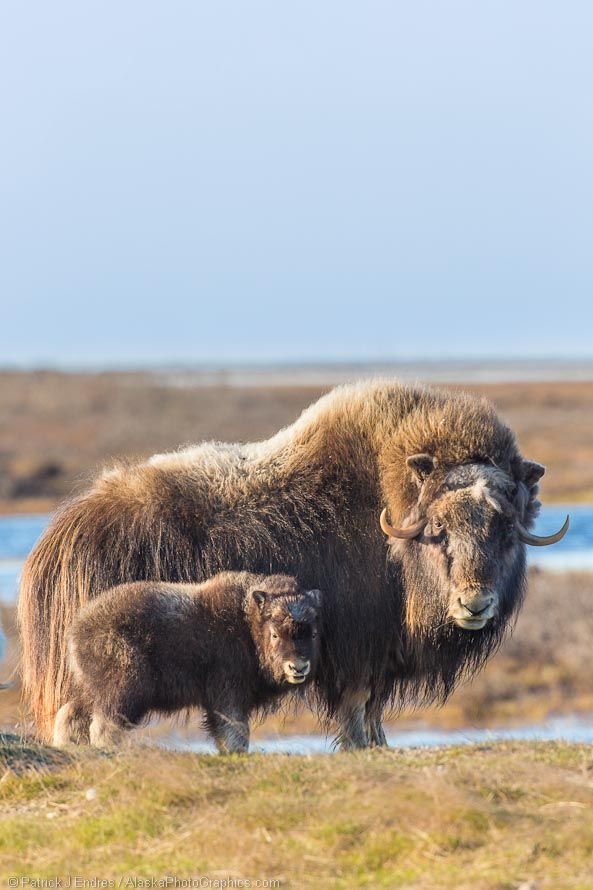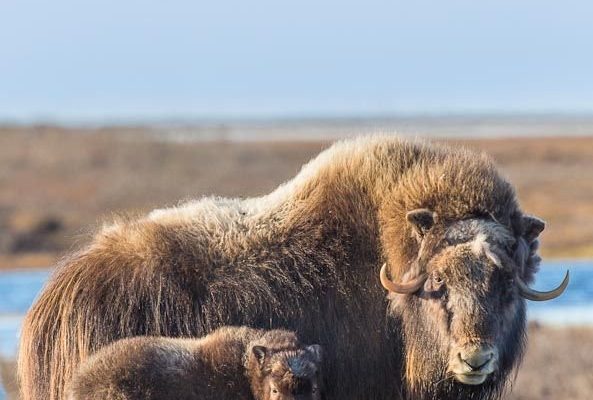
Raising young muskoxen, or calves, is no easy feat. It’s a bit like raising a child in a rugged forest—full of surprises and potential dangers. Female muskoxen, called cows, take the lead when it comes to nurturing their offspring. They form strong bonds with their little ones, teaching them how to navigate the harsh landscape. If you’re curious about how these charming creatures ensure their young grow strong enough to survive in the wild, you’re in for an interesting journey.
The Life Cycle of a Muskox
Understanding how muskoxen raise their young starts with knowing a bit about their life cycle. Muskox calves are typically born in late spring, around May to June, when the weather is warming up, and food is becoming more abundant. A cow usually gives birth to one calf, though twins can occur on rare occasions.
From the moment they’re born, these calves are surprisingly mobile. Within just a few hours, they’re usually standing and trying to walk. Imagine a newborn baby learning to take its first steps—only this baby has to get up quickly to avoid becoming a snack for a predator! The cow stays close, her protective instincts kicking in as she guides the calf through their icy home.
The Role of Mothers in Muskox Calves’ Development
Muskox mothers play a crucial role in the early lives of their calves. When they’re first born, calves rely on their mothers not just for warmth and food, but also for protection and teaching. A mother will keep her calf close, often nudging it gently with her nose to encourage movement. This bond is strongest during the first few months, when the calf is learning to graze and recognize the threats in their environment.
As the calf grows, the mother begins to introduce it to solid food, which consists mainly of grasses, mosses, and other vegetation. This gradual shift is like teaching a child to eat on their own—slow and careful. You might picture a mother muskox leading her calf to a patch of tasty lichen, showing it how to pull it from the snow.
Social Structure and Herd Dynamics
Muskoxen are incredibly social animals, living in herds that can range from a few individuals to over a hundred. This social structure is vital for the survival of both mothers and calves. When a calf is born, it becomes part of the herd, which often includes other females and their young.
Herds help to protect calves from predators like wolves and bears. When danger approaches, you might see a line of adult muskoxen form to create a barrier around the young. Imagine a group of parents at a school yard, standing protectively around their kids during a game of tag—this is what muskoxen do, only with much more at stake! The communal care also means that calves can learn from observing other adults, strengthening their survival skills.
Challenges of Raising Young in the Wild
While raising calves may sound idyllic, the Arctic environment presents real challenges for muskox mothers. They have to find enough food for themselves and their young during harsh winters when resources are scarce. Muskox cows need to be highly adaptive, constantly on the lookout for new grazing areas and potential dangers.
Calves also face threats from climate change, which affects their habitat. Changes in temperature can alter food availability, making it harder for mothers to provide for their young. The increased presence of predators due to habitat shifts can also pose a greater risk. You might think of it like a family trying to survive in a neighborhood that’s changing too quickly; they have to find ways to adapt to the new reality.
Training for Independence
As muskox calves grow, their mothers start to encourage more independence. This training phase is crucial. Imagine a teenager getting ready to leave for college; they need to learn life skills before venturing out into the world. Similarly, muskox calves begin to graze on their own while still staying close to their mothers for guidance.
During this time, they learn important social behaviors from their herd. They practice foraging and develop the strength they’ll need to survive through difficult winters. Interestingly, this independence doesn’t happen overnight. Calves typically stay with their mothers for about a year before they become fully independent and can join the larger herd on their own.
The Importance of Maternal Care
The nurturing behavior of muskox cows isn’t just about immediate survival; it shapes the future of the herd. Strong maternal care leads to healthy calves, which is crucial for the ongoing survival of muskox populations. A well-raised calf becomes an adult that can contribute to the herd, ensuring the species continues to thrive in its harsh environment.
In many ways, maternal care in muskoxen reflects the importance of family structure in the animal kingdom. The skills learned during those early months are what prepare calves for adulthood, success in finding food, and avoiding predators. When you see a muskox herd grazing peacefully, remember the hard work of the mothers behind each thriving calf.
Raising young in the wild is never easy, but muskoxen have mastered the art over thousands of years. Their strong family bonds, social structures, and remarkable adaptability in facing challenges ensure the survival of their young. Watching a mother muskox gently lead her calf through the snow can remind us of the tender yet tough love that exists in the wild.
If you ever find yourself in the Arctic tundra, take a moment to appreciate the resilience and dedication of these magnificent creatures. Their journey from vulnerable calves to strong adults is a testament to the power of maternal love and the instinct to survive. So, the next time you think of muskoxen, remember their incredible story of raising young, surviving, and thriving in one of the toughest environments on Earth.

